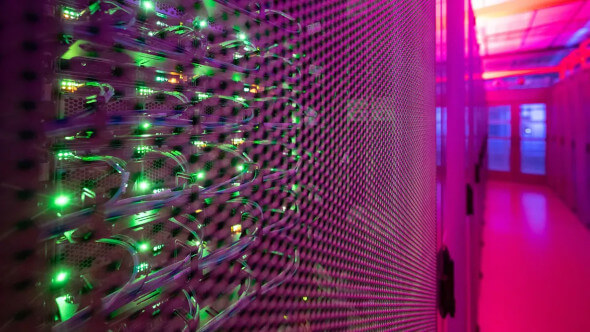
Setup & config options
Suitable power supply
RasPi & sFTP file transfer
Home network print server
Home network scan server
Mesh : home Lan USB drive
Explore hard & software
UFW firewall explained
Secured by fail2ban server
Software packaging & PPA
Apache 2.4+ LAMP server
https web server : port 443
Varnish caching proxy
Module : cgi & perl
Module : geoip
Modules : php & mysql
http*s error handling
Server : conditional logging
TL-domain & dynamic DNS
Webalizer log analyser
Defeat referrer spam
robots.txt & xml sitemaps
Server : .htaccess handling
The game & not the islands
Setup & config options
North Atlantic : Macaronésia
🚫 No ads & tracking
Environmental footprint of the tech industry
AI revolution drives up power consumption

Artificial intelligence is seen as the next big breakthrough in the history of technology. But the technology has one drawback: its hunger for electricity makes it a potential climate killer.
Is artificial intelligence, with its insatiable appetite for energy, becoming a major climate killer? The energy consumption of data centres for AI applications and other digitalisation projects in Europe is set to rise sharply by 2030 - and will probably not be able to be covered by renewable sources alone. According to a study, electricity demand is expected to almost triple to more than 150 terawatt hours by 2030. This accounts for around five percent of total European electricity consumption. So far, it has only been two percent.
According to the study, the increasing demand for electricity from AI could accelerate climate change if it is not covered by renewable energy. Currently, the majority of electricity for data centres still comes from fossil fuels, although many large data centre operators - including industry giants such as Amazon, Microsoft and Google - have committed to operating their facilities with renewable energy.
The tech giants recently had to admit that the AI boom has led to a significant increase in their greenhouse gas emissions. The latest Google environmental report published last July stated that emissions had risen by 13 percent to over 14.3 million tons of carbon dioxide in the past year alone, primarily due to increased energy consumption by data centres and emissions in the supply chain.
AI is ruining the carbon footprint of tech companies: The causes of the huge hunger for electricity can be seen in the technical equipment of a new AI data centre that was opened by Elon Musk's company xAI in the summer. The facility utilises 100,000 of the latest special chips (so-called H100 GPUs) from Nvidia simultaneously, as Musk proudly announced at X.
Each of these Nvidia processors has an output of 700 watts, which is roughly equivalent to the output of a modern, energy-efficient oven. When this computer centre trains a model, it needs 70 megawatts for the calculations alone. If you add the energy consumption for the network transmission of the data, that doubles again. That corresponds to the power of 25 wind turbines.
This adds up worldwide: it is estimated that data centres account for four to five percent of global energy consumption. If you add the use of digital technologies such as laptops and smartphones, this amounts to eight percent of global energy consumption. A huge proportion of this energy goes into training AI models.
When texts and images are generated using modern AI models, a lot of energy is consumed, similar to AI training: According to the expert's calculations, generating an image based on a text query consumes as much energy as half a mobile phone charge. Even if AI models are trained less in the future, prediction with these models will steadily increase energy consumption. The number of calculation steps for the most accurate AI models has increased by a factor of almost one million since 2018. Even with more energy-efficient algorithms, the demand for electricity from AI applications will increase because more and more people are using artificial intelligence at work and in their leisure time. And with the actual energy mix in the European Union, every use of AI will also generate CO₂ emissions. In 2023, almost a third of electricity in the EU was produced using fossil fuels.
The increasing demand for clean power poses considerable challenges. Reliable power sources are only available to a limited extent. There are also bottlenecks in the availability of skilled labour. According to the study, the additional demand for green electricity requires massive investment in renewable energy sources and the expansion of the electricity infrastructure to transport the electricity from the generation sites to the consumers.
AI as a climate saviour? For the overall climate balance of artificial intelligence, however, the contributions to climate protection and adaptation to climate change must also be taken into account - for example in the energy sector, in the production of goods, in agriculture and forestry or in disaster prevention. AI can help to increase food security and utilise resources in agriculture and industrial production more efficiently, It could also accelerate scientific experiments and thus the development of clean technologies. The digital sector also emphasises the role of AI as an aid to climate protection: Artificial intelligence has huge potential for climate protection. AI can significantly reduce the energy consumption of factories, make buildings carbon neutral, reduce food waste or minimise the use of fertilisers in agriculture.
However, no one can yet predict what the final outcome will be.
02-Nov 2024
Artwork gallery - AI generated
Every skilled or non-skilled users can create AI images by using the DALL-E. All you have to do: enter an English text prompt and allow a bit of computing time. The artificial intelligence generates a series of images that correspond to your text input prompt in the background. In order to use the Bing Image Creator, you must register with a free Microsoft account. At the start, every user receives 100 so-called boost points, which can be spent on image creation. New boost points can be topped up by redeeming so-called Microsoft Reward points for them. This way you get faster processing times.
![]() https://bing.com/create (requires login)
https://bing.com/create (requires login)
06-May 2023
An example enlarged





